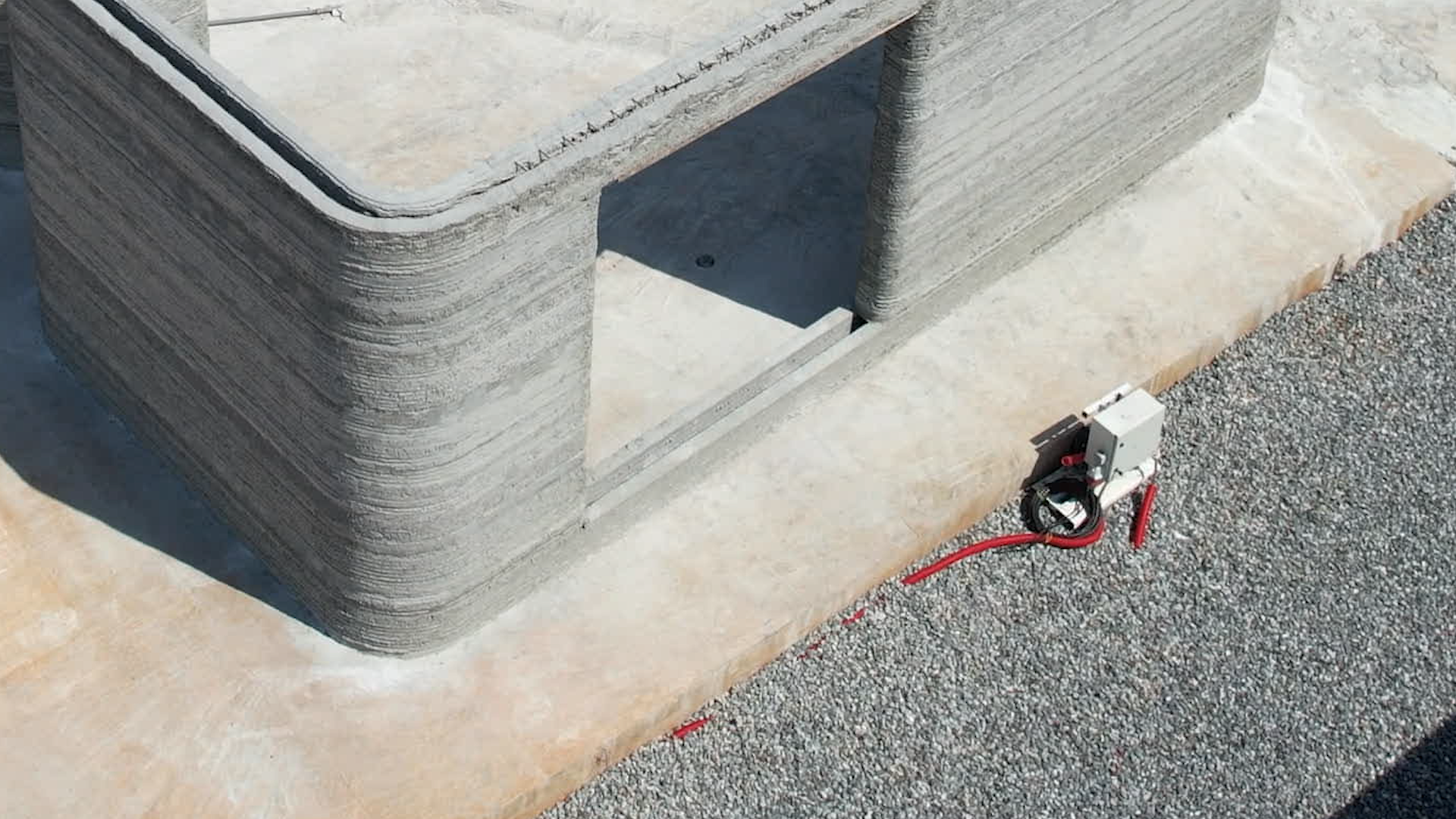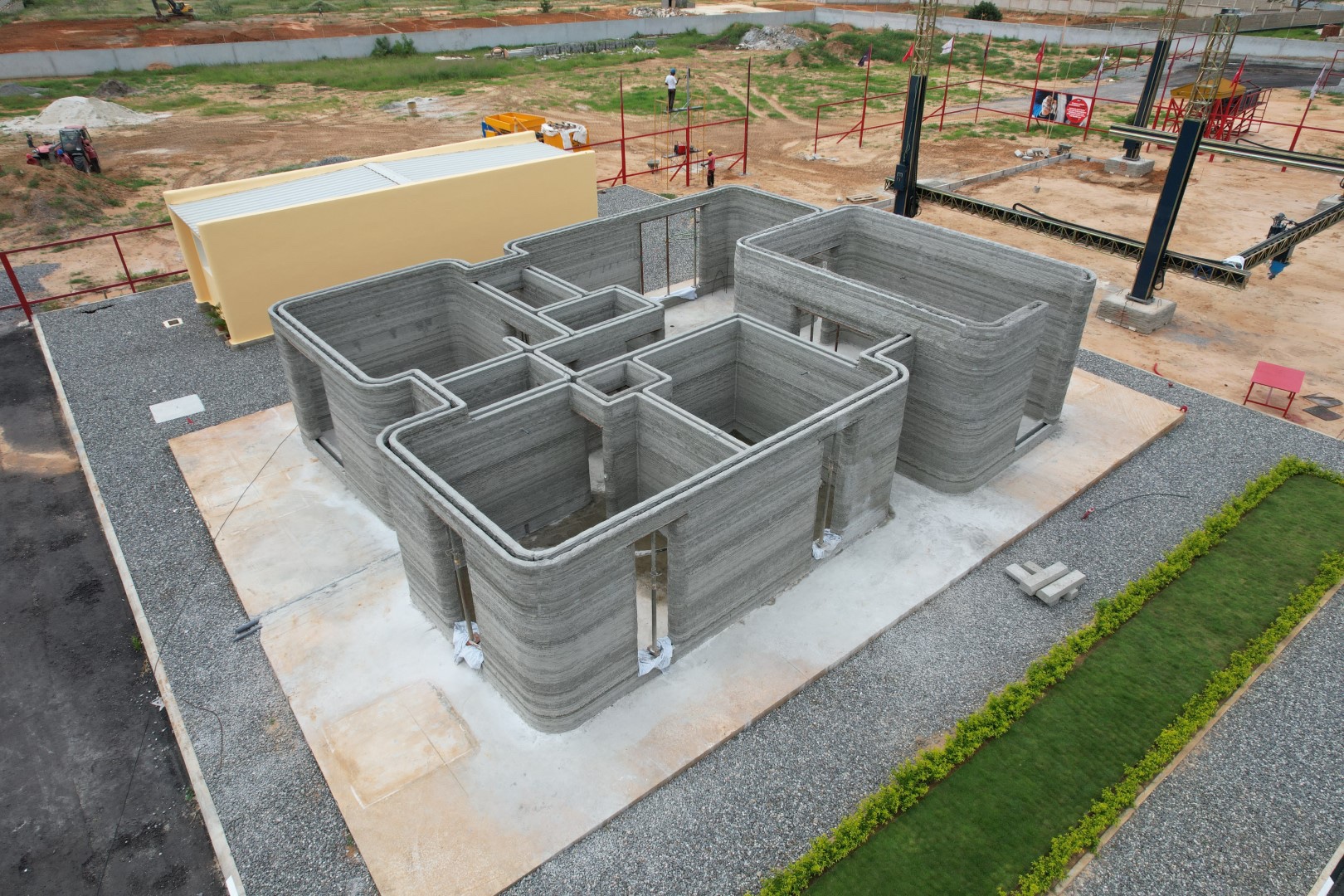Power2Build, an Angolan additive construction company that works with investors to fund and build affordable homes, has completed its second project. Power2Build built both homes with Danish company COBOD’s flagship BOD2 printer.
Moreover, on the first project, Power2Build was the first company to use COBOD’s D.fab material, which the latter company developed in partnership with CEMEX, the Mexican building materials giant. On the latest project, Power2Build used the BOD2 and D.fab to build a home well over twice the size of the first: 140 square meters (about 1500 square feet). Power2Build also managed to decrease production time from 48 hours to 30 — a reduction of almost 40%.
The advantage to D.fab is that the Magic Mix supplied by COBOD only constitutes 1% of the total printing material. The remaining 99% is comprised of locally available, regular concrete, which, according to COBOD, can lead to savings of up to 90% compared to materials typically used in 3D printed construction.

In a COBOD press release announcing the completion of the second project, Power2Build’s CEO, Ricardo Almeida, said, “We are very proud of our progress; people were questioning if we couldn’t print bigger. …We improved the speed of execution remarkably, but still believe there is room for improvement. In the future we will only become better at mastering this technology. We are getting more efficient by the day and closer to achieving our vision to deliver better housing at affordable prices to Angolan families.”
As the company points out in the press release, it seems to have no competition in Africa yet, with COBOD responsible for all six of the continent’s 3D printed buildings thus far. The BOD2 has been used to build not only Africa’s first 3D printed homes, in Kenya and Angola, but also its first 3D printed schools, in Malawi and Madagascar. In the press release, COBOD also notes that its customer, 14trees — which built the first 3D printed school, in Malawi — will, later this year, start work on “a double-digit number” of residential projects in Kilifi, Kenya.

It’s significant that sub-Saharan Africa and India appear to be emerging as two regions where additive construction could scale up quickly. For one thing, it suggests that regardless of preference, the technology’s best chance to succeed is in the areas that need it most. A 2021 study estimated that the housing shortage in sub-Saharan Africa to be at almost 50 million homes, while the housing shortage in India is estimated to be at over 70 million. Obviously, additive construction alone couldn’t fill those gaps. However, thanks in large part to COBOD, it’s starting to display real potential as a powerful tool that might aid conventional construction in gradually narrowing the shortages.
Another thing we can take away, from the increasing adoption of additive construction in the places in most urgent need of more housing, is that nonprofit and government subsidies will probably play a critical role in the sector’s scale-up. This has also been the case in North America, where, aside from the military, Habitat for Humanity is one of the biggest proponents of the technology. The likelihood that these types of subsidies will continue to grow is reinforced by the fact that there’s still so much room to see faster decreases in cost by increasing investment in the industry. That means that funders of 3D printed construction projects will be able to see for themselves, multiple, multi-year reductions in costs and build-times that would be unachievable with conventional methods.
Images courtesy of COBOD
Subscribe to Our Email Newsletter
Stay up-to-date on all the latest news from the 3D printing industry and receive information and offers from third party vendors.
Print Services
Upload your 3D Models and get them printed quickly and efficiently.
You May Also Like
Making 3D Printing Personal: How Faraz Faruqi Is Rethinking Digital Design at MIT CSAIL
What if your 3D printer could think more like an intelligent assistant, able to reason through a design idea, ask questions, and deliver something that works exactly the way the...
Reinventing Reindustrialization: Why NAVWAR Project Manager Spencer Koroly Invented a Made-in-America 3D Printer
It has become virtually impossible to regularly follow additive manufacturing (AM) industry news and not stumble across the term “defense industrial base” (DIB), a concept encompassing all the many diverse...
Heating Up: 3D Systems’ Scott Green Discusses 3D Printing’s Potential in the Data Center Industry
The relentless rise of NVIDIA, the steadily increasing pledges of major private and public investments in national infrastructure projects around the world, and the general cultural obsession with AI have...
Formlabs Teams Up with DMG MORI in Japan
In late June, Nick Graham, Chief Revenue Officer at Formlabs, announced on LinkedIn that the company had partnered with DMG MORI, one of the world’s leading machine tool companies, to...

































